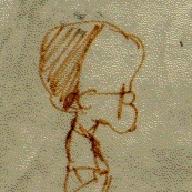- Blog/
Electric Dreams
Although I technically majored in an electrical engineering department, I’m definitely a software guy — I’m afraid to touch my car battery, and I’ve managed to set fire to a couple of toasters.
So I’m not just impressed, I’m positively intimidated by the high school youngsters depicted by Caroline Kettlewell in Electric Dreams: One Unlikely Team of Kids and the Race to Build the Car of the Future. Led and encouraged by an unlikely pair of high school teachers — Eric Ryan, the idealistic Californian who made his way to rural North Carolina via Teach for America, and Harold Miller, the shop teacher who wrapped his boundless imagination and intellect with a Southern drawl and patience — the team at Northampton surprised everyone including themselves by winning a regional electric vehicle contest against elite and well-funded schools.
What the two instructors had in common was faith that in six months their students could turn a decrepit Ford Escort into cruising proof that you can run a car on batteries (the wiry teenage girl Katrina drove the dangerous-sounding yet appropriately named Shocker sixty-five miles in the range competition before time expired, and made her mark as the first African-American female to win on a NASCAR track) And their enthusiasm was contagious — teachers and students from neighboring schools participated, friends and family donated time and money, and local businesses contributed materials, services and expertise, Appropriately, the students’ first-place finish was a victory for their community, demonstrating that their part of the rural South was good for more than just “bailing hay”, as a teacher from a competing school had snobbily remarked.
Ms. Kettlewell’s prose is perfectly paced and casual for this story, imparting the mannerisms and speech of these colorful figures in a way that tells as much about the characters as the Southern culture. (I don’t know if the author has southern roots, but the book reads as if it were narrated while sitting on a front porch with lemonade in hand.)
I’m also gratified to see this treatment didn’t focus just on the grand idea of entering the contest and the winning of the contest — the construction of Shocker is an excellent engineering case study, and the teachers and kids succeeded by crunching the numbers, making do with the resources they had, and planning ahead (have something running a month ahead of time, they were advised, and they did). Arduous grunt work (packing students into the car to simulate the weight of sixteen heavy batteries) punctuated by nerve-wracking anomalies (the first test-drive emitted oil-burning smoke from a supposedly oil-less vehicle) is rewarded by seeing the fruits of their labors not just work, but work fantastically well.
The happy ending does leave us hanging a bit. It’s noted that the big automakers dropped the ball on getting EV vehicles on the market, and there’s a mention of the emergence of the hybrids, but there’s not much analysis of why the EV’s didn’t take off. And while Eric Ryan and Harold Miller went on to to bigger things (Mr. Miller moved up to run a regional EV competition and Mr. Ryan became a science education consultant), it’s not clear what happened to the student participants after they went on to win the national event in Phoenix.
But knowing what they’ve accomplished, I’m not worried about what’s ahead of them. Every once in a while, we need a reminder that kids are the future, and Electric Dreams shows what can be accomplished with a little idealism and the support of community, family, schools and industry.
